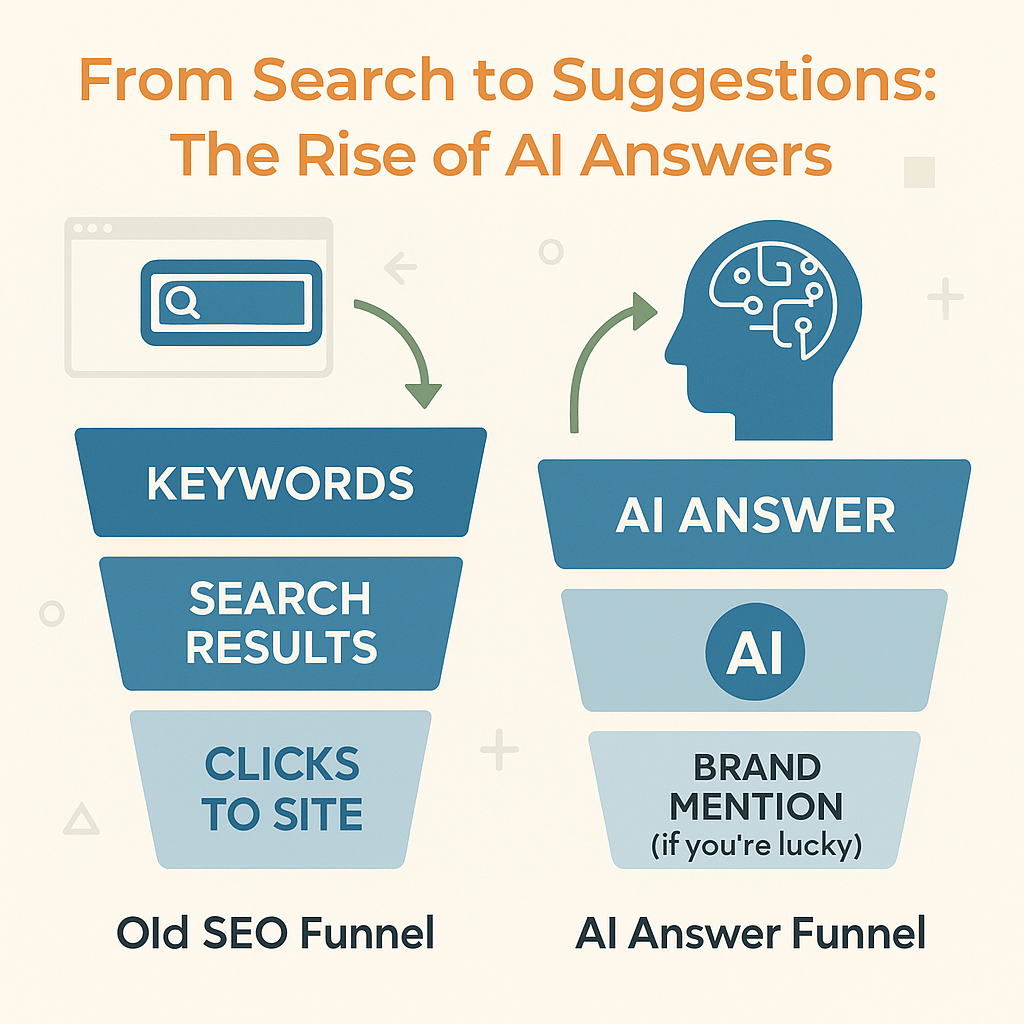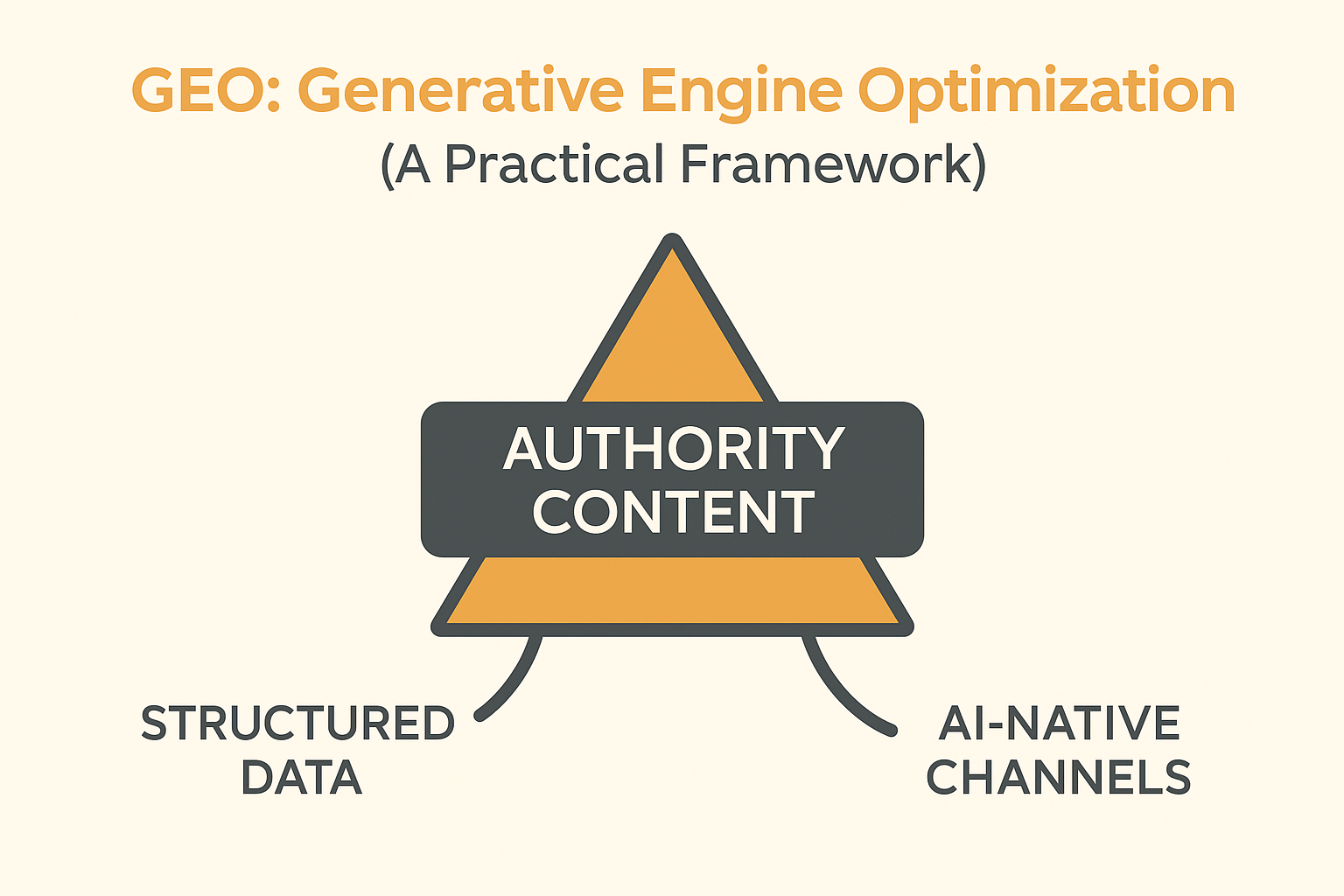The End of SEO as We Know It?
The End of SEO as We Know It?
How Generative AI Is Reshaping Digital Marketing
Your next customer might never visit your website. They’ll ask an AI instead — and it’ll decide what to show them. Welcome to the era of AI-driven discovery, where traditional search is being replaced by answer engines.
1) From Search to Suggestions: The Rise of AI Answers
For years, SEO fought for blue-link clicks. Now tools like ChatGPT, Google SGE, and Perplexity deliver the answer directly — often without a click. Expect fewer visits, less control over how your brand is represented, and a new battleground: being cited inside AI answers.

Key shifts
• AI synthesizes and paraphrases your content.
• Authority and structure beat keyword density.
• Trust signals decide whether you’re quoted, summarized, or ignored.
2) What This Means for Marketing Leaders
• Measure new visibility. Track brand mentions inside AI answers, not just rankings.
• Elevate credibility. Expert bylines, proprietary data, and references travel farther in AI summaries.
• Design for clarity. Content architecture, schema, FAQs, and tight sections help AI understand and surface your material.
3) GEO: Generative Engine Optimization (A Practical Framework)
Think beyond “ranking pages.” Make your brand answer-ready with this simple framework. (This isn’t a new service — it’s smart design, content structure, and distribution.)

Publish pieces others cite: original research, leadership POVs, benchmark reports, and customer stories with numbers.
Add schema markup, clear H2/H3s, FAQs, tables, and crisp summaries. Help AI parse intent, entities, and facts quickly.
Be discoverable where AIs look for signals: LinkedIn thought leadership, Q&A communities, citation-friendly media, and syndication.
4) Do This Now: A 7-Step Site & Content Playbook
1) Audit top pages for authority (original insights, sources, author profiles).
2) Add/refresh schema (Article, FAQ, HowTo, Product).
3) Refactor for summarization: short sections, bullets, callouts, TL;DRs.
4) Publish expert POVs from named executives and SMEs.
5) Turn research into assets: charts, stats blocks, downloadable briefs.
6) Earn citations via guest posts, talks, and data partnerships.
7) Track “answer visibility” alongside traffic and conversions.
5) What’s Next
Generative AI isn’t killing SEO; it’s evolving it. The winners will be the brands that combine trust with data clarity in every asset — starting with site architecture and content design.
James Faulkner is SodaPop Media’s Content Manager and Creative Director.





